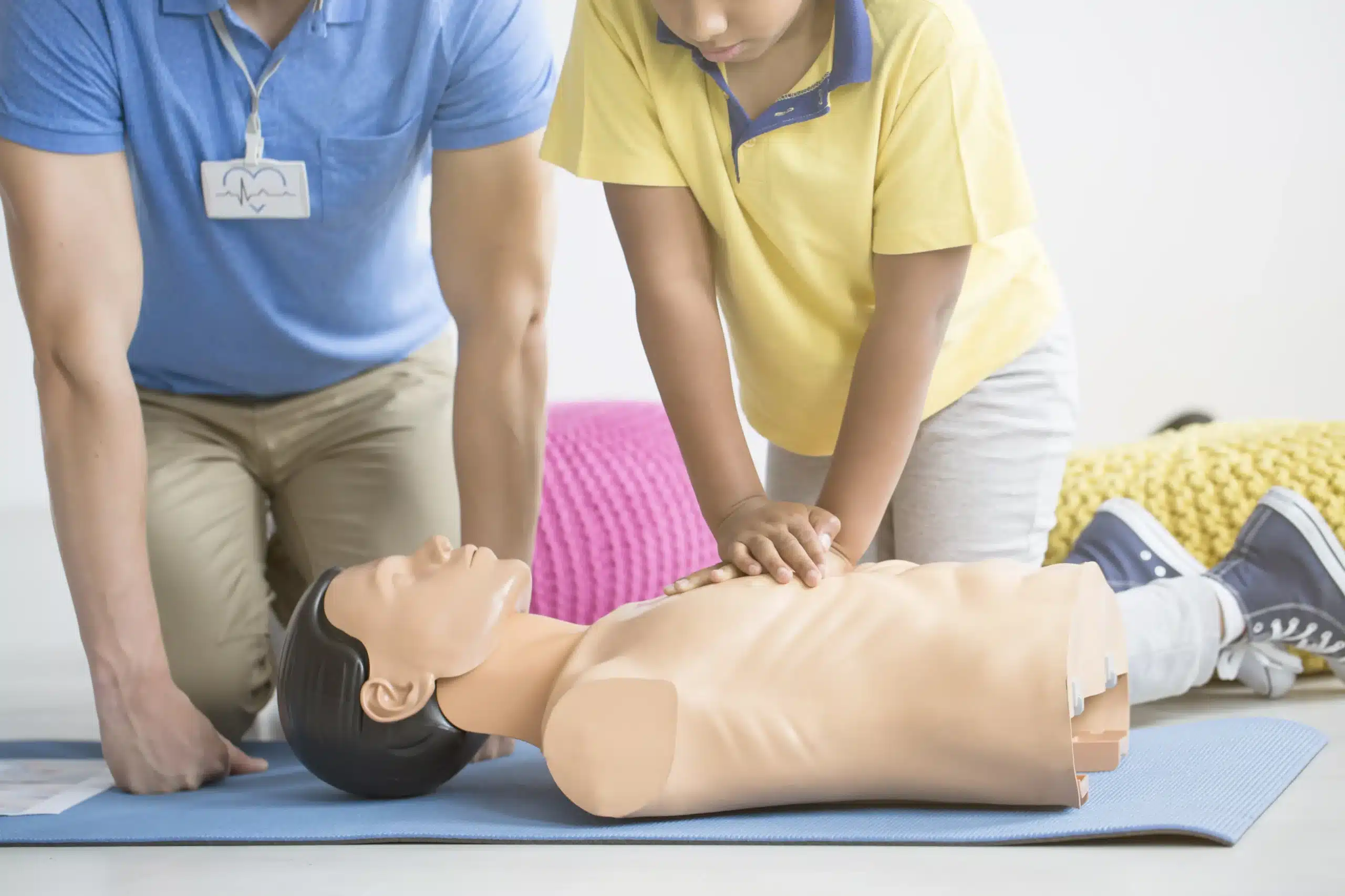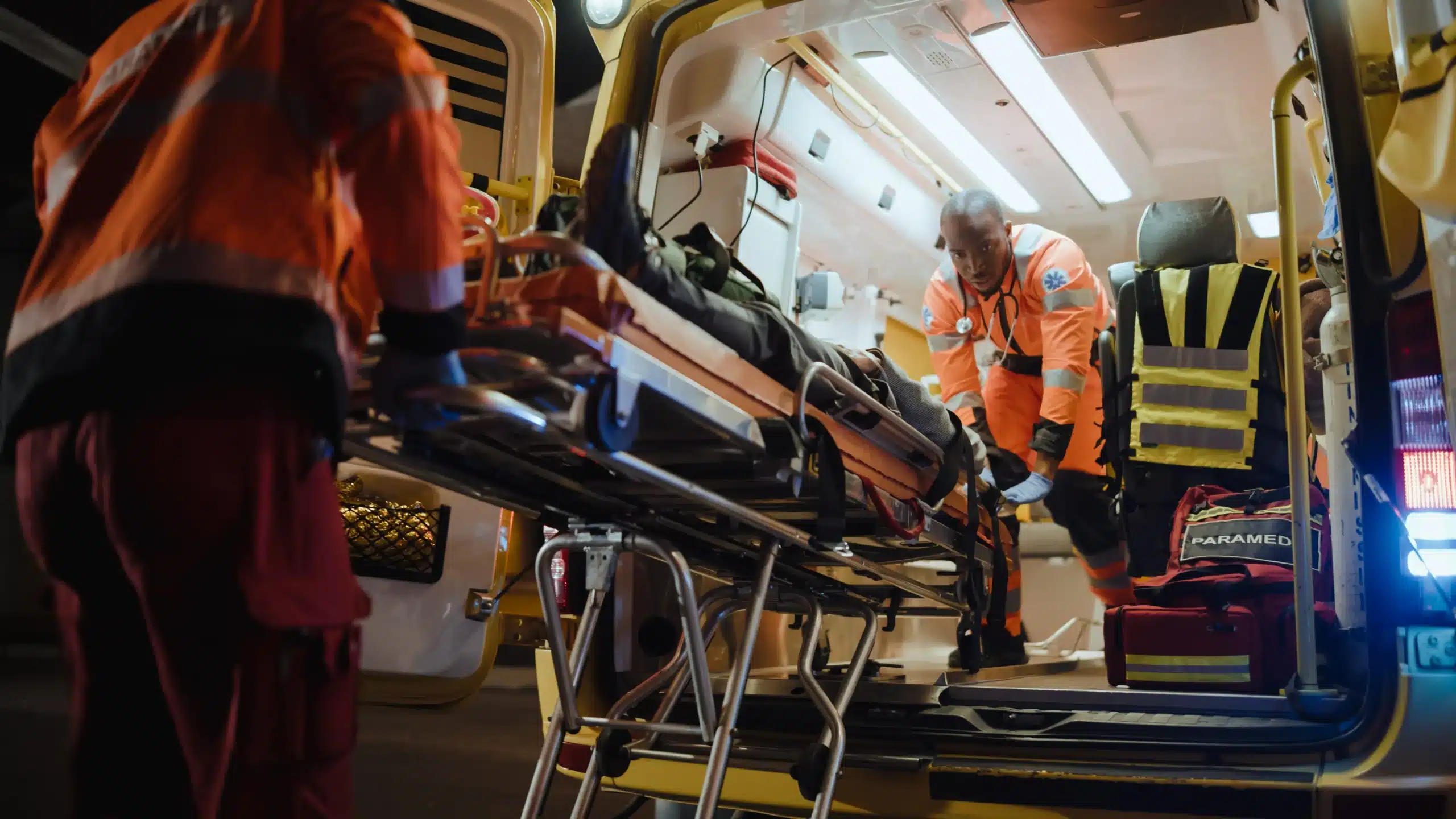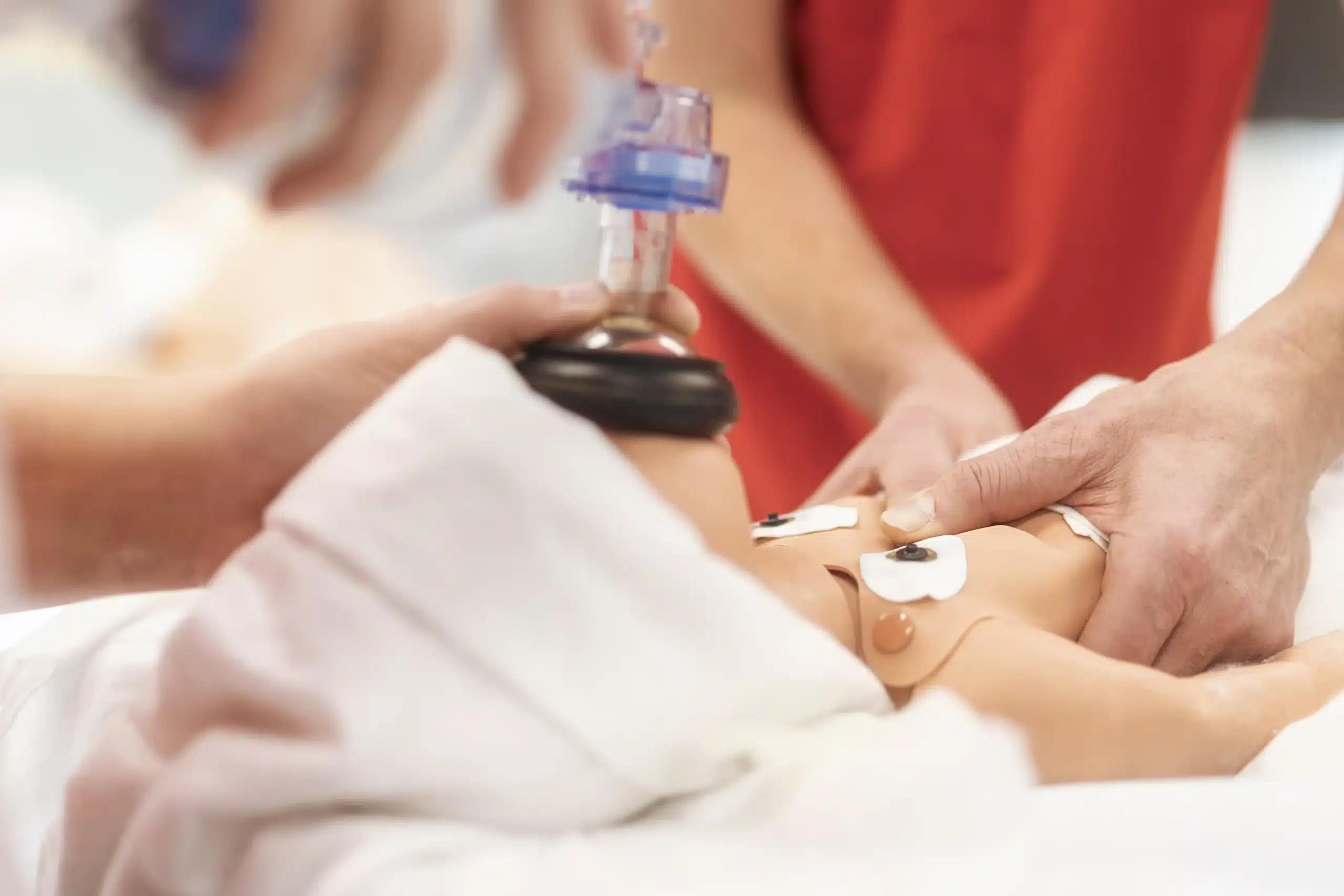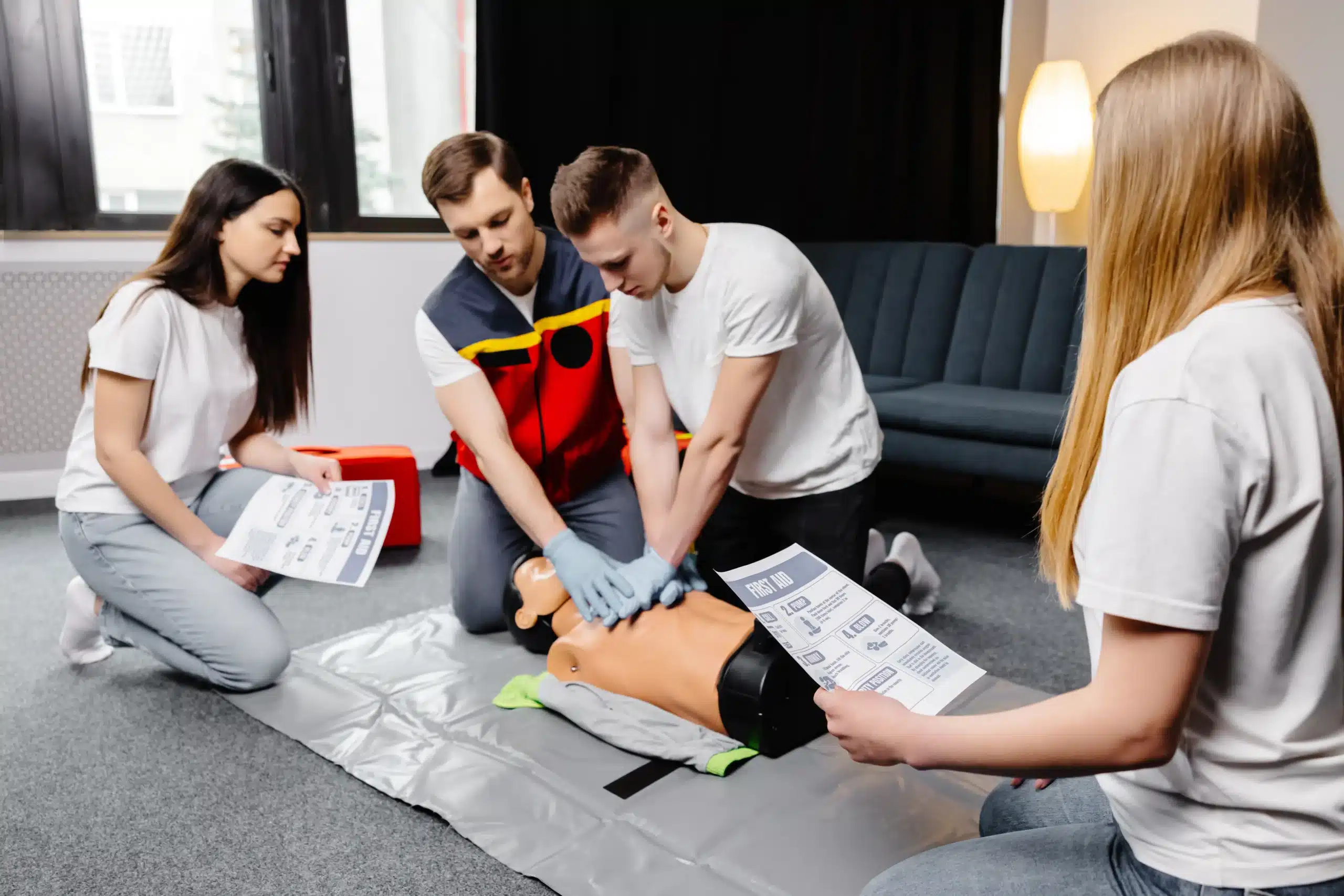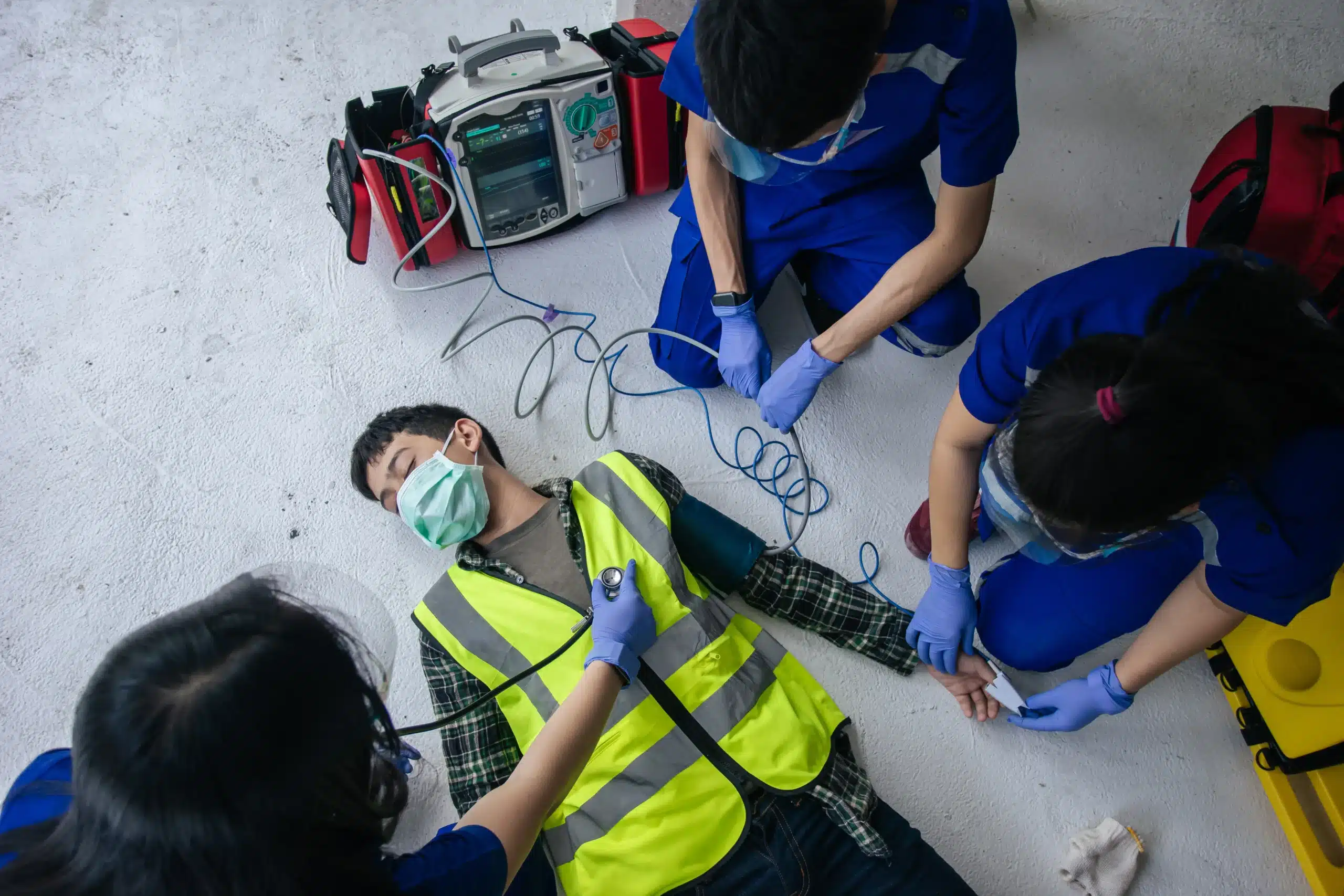Emergencies can occur when least expected. Imagine a colleague suddenly collapsing during a meeting or someone choking in the cafeteria. These scenarios highlight the critical importance of workplace CPR (Cardiopulmonary Resuscitation) and First-Aid training. This article explores why these skills are essential, how they benefit employees, and what organizations can do to implement them effectively.
Understanding the Basics of CPR & First-Aid
CPR and First-Aid are life-saving techniques. CPR combines chest compressions with artificial ventilation to preserve brain function during cardiac arrest until professional help arrives. First-Aid, on the other hand, involves immediate care for injuries or sudden illnesses. Together, they form the foundation of emergency response in the workplace.
Learning these skills is crucial. Employees equipped with CPR and First-Aid training can respond to emergencies confidently and competently. They become the first line of defense, providing critical support before medical professionals arrive. Studies show that immediate CPR can double or triple survival rates after cardiac arrest.
Implementing this training improves workplace safety. It empowers employees, boosts morale, and fosters a culture of care. Organizations that prioritize employee well-being see reduced downtime, enhanced productivity, and a more cohesive team.
Why CPR & First-Aid Training Matters
The workplace is a microcosm of society. With diverse ages and health conditions among employees, emergencies are inevitable. CPR and First-Aid training prepare individuals to handle such situations effectively and efficiently.
A quick response can save lives. In cardiac arrest cases, every minute of delay reduces survival chances by 7-10%. Trained employees can deliver immediate CPR, increasing the likelihood of positive outcomes. First-Aid knowledge helps manage injuries, reducing the severity of injuries and preventing complications.
Workplace training fosters a supportive environment. Employees feel valued and secure, knowing their employer invests in their safety. This confidence translates to increased job satisfaction and loyalty, benefiting the organization as a whole.
Key Benefits of Workplace CPR & First-Aid Training
Enhanced Safety and Preparedness
Safety is paramount in any workplace. CPR and First-Aid training equip staff with the knowledge and skills needed to address emergencies head-on. Employees learn to assess situations, provide appropriate care, and stabilize victims until professional help arrives.
Preparedness minimizes panic. When faced with an emergency, untrained individuals may freeze or act inappropriately. Trained employees, however, remain calm and focused, providing effective assistance. This composure can prevent further harm and ensure a swift recovery.
Regular training sessions reinforce these skills. Refresher courses keep employees up-to-date with the latest techniques and protocols. This continuous learning fosters a proactive approach to workplace safety.
Boosting Employee Confidence and Morale
Confidence is key in emergency situations. CPR and First-Aid training empower employees, giving them the tools they need to take charge and make a difference. This empowerment extends beyond emergencies, boosting overall confidence and morale.
Trained employees are more likely to assist others. They feel a sense of responsibility and pride in their ability to help. This willingness to support colleagues fosters a positive work environment, enhancing teamwork and collaboration.
Such training also strengthens trust in leadership. Employees appreciate organizations that prioritize their well-being. This trust translates to increased job satisfaction, higher retention rates, and a strong employer brand.
Reducing Workplace Accidents and Injuries
Accidents are inevitable, but their impact can be mitigated. With CPR and First-Aid training, employees can respond swiftly and effectively, reducing the severity of incidents and preventing further complications.
Trained employees recognize potential hazards. They are more vigilant and proactive in addressing safety concerns, minimizing risks before they escalate. This awareness contributes to a safer work environment, reducing the frequency and severity of accidents.
Injury management prevents complications. Prompt First-Aid treatment reduces recovery time and healthcare costs. This efficiency benefits both employees and the organization, ensuring a healthy and productive workforce.
Implementing CPR & First-Aid Training in the Workplace
Assessing Workplace Needs and Risks
Every workplace is unique, with its own set of risks and requirements. Conducting a thorough assessment of potential hazards and emergency scenarios is crucial in developing an effective training program.
Identify common risks. Consider factors such as the nature of work, employee demographics, and previous incident reports. This analysis helps prioritize training needs and tailor programs to address specific concerns.
Engage employees in the process. Encourage feedback and participation from staff to gain insights into their experiences and perspectives. This involvement fosters a sense of ownership and commitment to workplace safety.
Designing a Comprehensive Training Program
A well-structured training program is essential for success. Collaborate with certified instructors and organizations specializing in CPR and First-Aid to develop a curriculum that meets industry standards and regulations.
Incorporate practical exercises. Hands-on training reinforces theoretical knowledge and builds confidence. Simulated scenarios allow employees to practice techniques and improve their response times.
Ensure accessibility and inclusivity. Accommodate diverse learning styles and abilities by offering various training formats, such as online courses, in-person sessions, and hybrid options. This flexibility ensures all employees can participate and benefit from the training.
Promoting Training Participation and Engagement
Encouraging employee participation is key to a successful training program. Develop strategies to motivate staff and emphasize the importance of CPR and First-Aid skills.
Communicate benefits clearly. Highlight the personal and professional advantages of training, such as increased confidence, enhanced teamwork, and potential life-saving abilities. Use testimonials and success stories to illustrate the impact of training.
Incentivize participation. Offer rewards or recognition for completing training, such as certificates, badges, or small prizes. This encouragement boosts morale and fosters a culture of continuous learning.
Evaluating and Improving Training Effectiveness
Regular evaluation ensures the training program remains relevant and effective. Establish metrics to assess employee performance, knowledge retention, and overall program success.
Gather feedback from participants. Conduct surveys or focus groups to identify areas for improvement and address any concerns. This input helps refine the program and enhance its impact on workplace safety.
Stay informed about industry advancements. Keep up-to-date with the latest CPR and First-Aid techniques, guidelines, and technologies. Incorporate new developments into training sessions to maintain a high standard of care.
Fostering a Culture of Safety and Preparedness
Encouraging Open Communication and Collaboration
A strong safety culture relies on open communication and collaboration. Encourage employees to share concerns, report incidents, and suggest improvements. This transparency fosters trust and accountability within the organization.
Establish safety committees or teams. These groups serve as champions for workplace safety, promoting awareness and facilitating training initiatives. Involving employees in safety discussions empowers them to take ownership of their environment.
Celebrate successes and milestones. Recognize achievements in safety and preparedness, such as reaching training goals or reducing workplace incidents. This acknowledgment reinforces the importance of safety and motivates continued efforts.
Developing Emergency Response Plans and Protocols
Comprehensive emergency response plans are crucial for effective crisis management. Develop clear protocols outlining roles, responsibilities, and procedures for various emergency scenarios.
Conduct regular drills and simulations. Practice emergency response plans to ensure employees are familiar with their roles and responsibilities. These exercises help identify potential gaps and areas for improvement.
Review and update plans periodically. Regularly assess and revise emergency response plans to address changes in the workplace, personnel, or industry regulations. This adaptability ensures the organization remains prepared for any situation.
Supporting Continuous Learning and Improvement
A commitment to continuous learning enhances workplace safety and preparedness. Encourage employees to pursue additional training, certifications, or development opportunities related to CPR and First-Aid.
Provide resources and support. Offer access to online courses, workshops, or seminars to help employees expand their knowledge and skills. This investment in professional development benefits both the individual and the organization.
Foster a growth mindset. Encourage employees to view challenges and setbacks as opportunities for learning and improvement. This perspective promotes resilience and adaptability, essential qualities in maintaining a safe and prepared workplace.
Conclusion
Workplace CPR and First-Aid training is an invaluable investment in employee safety and well-being. By equipping staff with life-saving skills, organizations can create a safer, more supportive work environment. Implementing comprehensive training programs and fostering a culture of safety and preparedness not only benefits employees but also enhances organizational resilience and success. Prioritize workplace CPR and First-Aid training, and empower your team to make a difference when it matters most.

